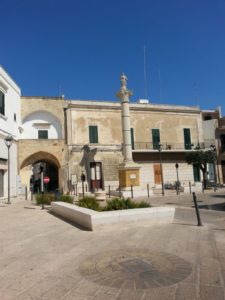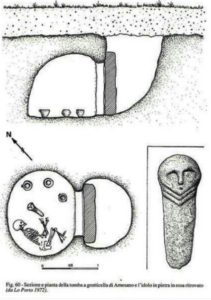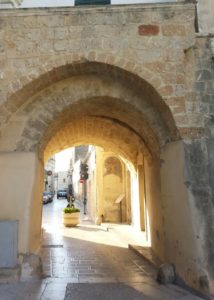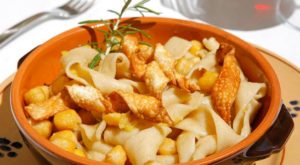 From Lecce
From Lecce ![]() you get to Arnesano
you get to Arnesano ![]() in just over ten minutes, after passing through the territory of the Messapian Rudiae, a neighbouring city and nemesis of Lupiae, the ancient Lecce. Arnesano was part of the circle of fiefdoms that embellished and protected Lecce, produced oil and wine and, above all, contributed to the birth of the great architecture, Romanesque first, Baroque later, with the blocks of Lecce stone extracted from the many quarries that still give the flat landscape of the Cupa valley a lively appearance. In one of these quarries in the 1960s, one of the oldest symbols of Salento’s spirituality towards mother earth was found.
in just over ten minutes, after passing through the territory of the Messapian Rudiae, a neighbouring city and nemesis of Lupiae, the ancient Lecce. Arnesano was part of the circle of fiefdoms that embellished and protected Lecce, produced oil and wine and, above all, contributed to the birth of the great architecture, Romanesque first, Baroque later, with the blocks of Lecce stone extracted from the many quarries that still give the flat landscape of the Cupa valley a lively appearance. In one of these quarries in the 1960s, one of the oldest symbols of Salento’s spirituality towards mother earth was found.
We go back some two thousand four hundred years before Christ, to the height of the Neolithic period. An individual with a stone idol with human features was buried here. The people of Arnesano affectionately call it pupo, while some scholars  believe it to have the face of an owl, a totemic animal that watches over the nights and the dead. The archaeological site of the Tufi Vecchi or Riesci is now an unfenced urban park with olive trees and medicinal shrubs with a well-equipped dog park.
believe it to have the face of an owl, a totemic animal that watches over the nights and the dead. The archaeological site of the Tufi Vecchi or Riesci is now an unfenced urban park with olive trees and medicinal shrubs with a well-equipped dog park.
For those travelling with their four-legged family members and for those who understand how important a stop-off point can be, this is the right place.

But Arnesano is also the story of the Palazzo Marchesale![]() , which originated from a tower controlling the modest ‘Porta Rande’
, which originated from a tower controlling the modest ‘Porta Rande’ ![]() . In the palace there had been a rich secular picture gallery since the 17th century, which after 1802 was dismembered and transported to Naples, Venice and Rome. The only four canvases remaining in Arnesano can be seen in the Chapel of the Bernardini Asylum.
. In the palace there had been a rich secular picture gallery since the 17th century, which after 1802 was dismembered and transported to Naples, Venice and Rome. The only four canvases remaining in Arnesano can be seen in the Chapel of the Bernardini Asylum.
 But Arnesano is a land of work, fields and workshops. Among the dishes given to us by the land and history, we would like to ask for ‘ciciri e tria’, an Arab-Norman dish that even the geographer Al Edrisi described in 1154 when speaking of the Arab pasta shops in Palermo. It is a long pasta dish seasoned with chickpeas and fried scraps of pasta added at the end of the seasoning. After this historical parenthesis, it is considered necessary to make a gastronomic stop at the trattoria ai ‘Spilusi’ where Francesco will tell you the micro-stories of the products of the land, of Copertino’s D.O.C. rosé wine and of the crunchy flavour of ‘ciciri e tria’, a Salento dish with an Arab and Mediterranean vocation.
But Arnesano is a land of work, fields and workshops. Among the dishes given to us by the land and history, we would like to ask for ‘ciciri e tria’, an Arab-Norman dish that even the geographer Al Edrisi described in 1154 when speaking of the Arab pasta shops in Palermo. It is a long pasta dish seasoned with chickpeas and fried scraps of pasta added at the end of the seasoning. After this historical parenthesis, it is considered necessary to make a gastronomic stop at the trattoria ai ‘Spilusi’ where Francesco will tell you the micro-stories of the products of the land, of Copertino’s D.O.C. rosé wine and of the crunchy flavour of ‘ciciri e tria’, a Salento dish with an Arab and Mediterranean vocation.
